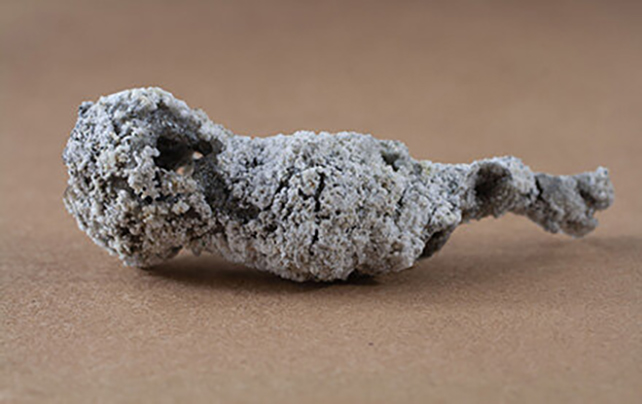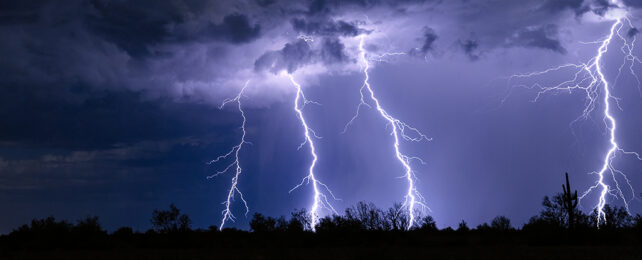A lightning bolt that struck a tree on Florida's west coast has produced a fascinating type of phosphorus material we haven't seen on Earth before: one that could represent a whole new mineral group, bridging the gap between space minerals and minerals found on Earth.
The material, which is a close match for calcium phosphite (CaHPO3), was found trapped inside a fulgurite – a "metal glob" formed by the reaction of the ultra-hot lightning bolt with the sand around the roots of its target.
These 'fossilized lightning' fulgurites often occur when lightning strikes certain types of sand, silica, and rock. What's much less common is to find something so unique hidden inside one of these structures.

"We have never seen this material occur naturally on Earth – minerals similar to it can be found in meteorites and space, but we've never seen this exact material anywhere," says geoscientist Matthew Pasek, from the University of South Florida.
The lightning strike combusted carbon in the tree it hit, as well as the iron that had built up around its roots, the researchers determined. This form of calcium phosphite could well form in other high-energy scenarios, and may play a significant role in the phosphorus cycle – the movement of this chemical element around Earth.
Attempts to remake this CaHPO3 in the lab were unsuccessful, showing that very specific conditions and timings are required to produce the rarely seen mineral. We may have to wait for another lightning strike to see it again.
As well as affecting the phosphorus cycle today, the findings may also have relevance in terms of the earliest periods in the history of our planet. These sorts of lightning strikes and chemical reactions were likely to have been happening regularly, but the cycle of phosphites is not something scientists fully understand.
"Previous researchers indicate that lightning reduction of phosphate to have been a widespread phenomenon on the early Earth," says geoscientist Tian Feng, from the University of South Florida.
"However, there is an environmental phosphite reservoir issue in Earth that these solid phosphite materials are hard to restore."
That "issue" means that we can't fully explain certain phosphite-driven biological and chemical processes that we know are happening, but which should rely on stores of phosphite that are yet to be discovered.
The appearance of this brand new phosphorus material can also teach scientists more about how phosphorus is reduced – that is, transformed into other states via chemical reactions via the gaining of electrons – at different temperature levels.
At the same time, the research provides more information about the form and power of lightning itself. This is far from the first time that this spectacular phenomena has produced materials of special interest to scientists.
"It's important to understand how much energy lightning has because then we know how much damage a lightning strike can cause on average and how dangerous it is," says Pasek.
"Florida is the lightning capital of the world and lightning safety is important – if lightning is strong enough to melt rock, it can certainly melt people too."
The research has been published in Communications Earth & Environment.
